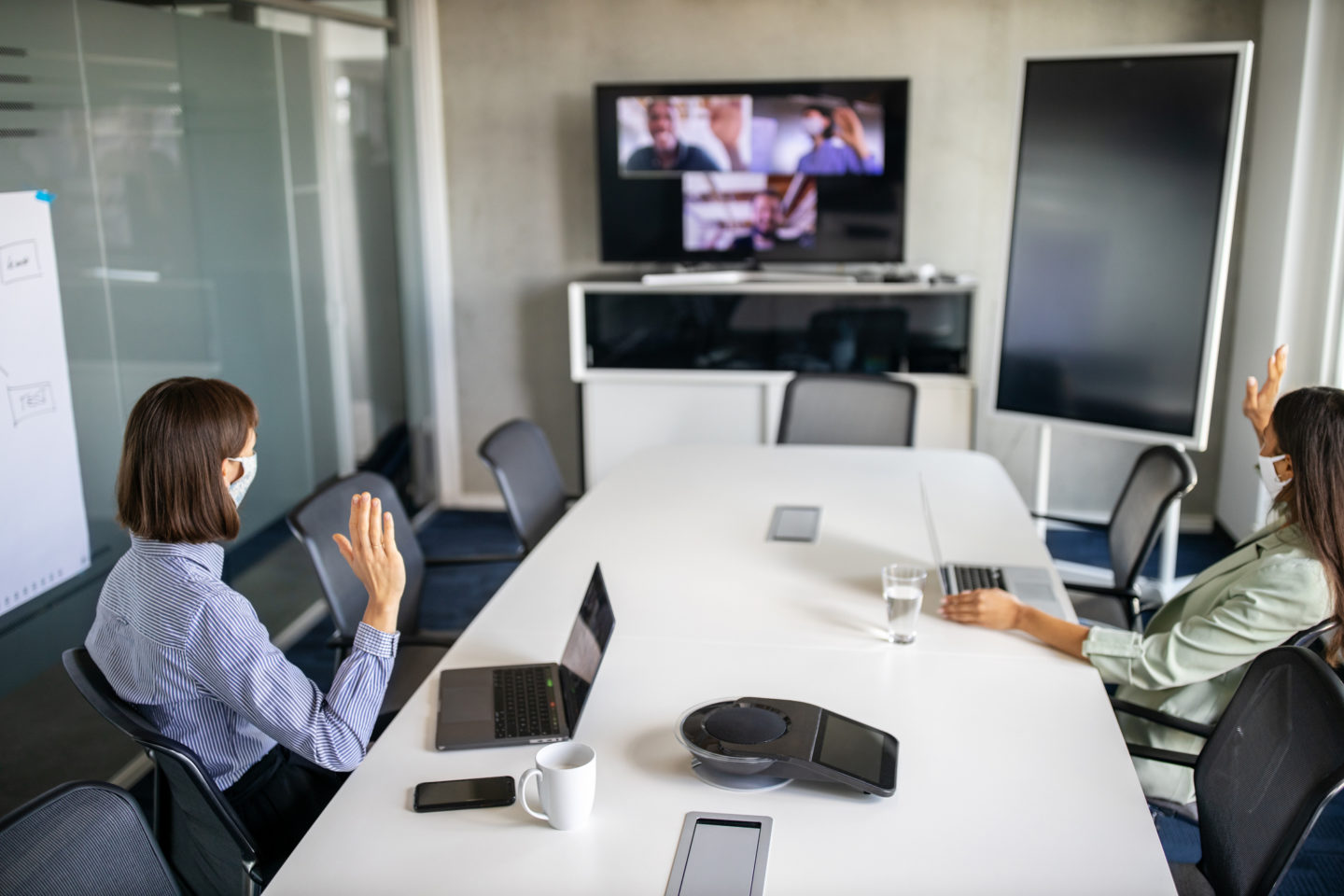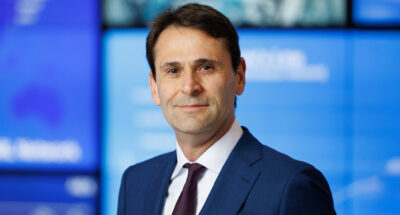
Supply chains need more than a tariff calculator
New models of economic development are emerging from global trade fragmentation. Supply chain executives must now weigh far more complex trade-offs, says Christos Cabolis ...

by Frederik Anseel Published June 30, 2021 in Strategy • 7 min read
A study sheds light on exactly how workplaces are changing during COVID-19, and the steps business leaders can take to ensure employees adapt effectively.
The COVID-19 crisis has changed the way we work. Some say the coronavirus pandemic will have a lasting, positive impact on workplace culture since the lockdown has become synonymous with working from home for many people. Others complain remote work can be isolating, as it also makes the competing priorities that employers and employees are juggling very visible.
What exactly does this say about the future of workplaces, and how should businesses adapt? UNSW Business School’s Frederik Anseel, Associate Dean of Research and Professor in Organisational Psychology, and Kevin Kniffin, Assistant Professor of Organisational Behavior and Leadership at Cornell University, are two co-authors of a global study examining the wide-ranging effects of COVID-19.
The study, COVID-19 and the Workplace: Implications, Issues, and Insights for Future Research and Action, published in the leading academic journal American Psychologist and made freely accessible online, brings together a large, diverse team of 29 researchers to explore some of the critical workplace changes that are currently unfolding. It presents a broad review of prior research rooted in organisational psychology to make sense of COVID-19’s implications for employees, teams, and organisations.
“Any co-authorship group above five seems rare, and yet we have 29. Likewise, it’s more typical for academic articles to specialise rather than consider broad-scope impacts like our article,” A/Prof. Kniffin says. “It’s the learning that we gained from each other in the course of writing the article that might have been surprising for some of us; and, we hope, will offer numerous surprises for readers from all walks of life,” he adds.
The paper breaks down two key themes: emerging changes in work practices (working from home and virtual teams, for example) and the economic and social-psychological impacts (such as unemployment and mental wellbeing) to offer meaningful ways to manage the challenges ahead.
“Once staff will come back to work, there’s a good chance that they have different expectations. People will have thoughts about their lives, families and health and what sort of role work plays,” says Prof. Anseel.
So, businesses must now reimagine themselves and how they relate to the world and then communicate this to employees. To engage employees, managers should come up with a clear and communicable message of new beginnings – a clean break, but with an original purpose, and communicate that clearly to their teammates.
“We know from research that meaningfulness and significance (or making a difference) is an important motivator at work and will help people again find sense in what they do,” adds Prof. Anseel.
Companies at this time have the opportunity and duty to champion what they prioritize. “For example, if people wondered whether a given company was genuinely committed or not to goals such as diversity, inclusion, and equity in the workplace, these months in the wake of COVID-19’s emergence will offer evidence,” says A/Prof. Kniffin.
The second big challenge is restoring a sense of community and belongingness, not only for staff but also for customers. But reinventing the workplace and the office, without reverting to the nine to five mentality, will be a big challenge, says Prof. Anseel. “Many people have felt isolated and lonely. We probably won’t be going back to the office like we did before, so companies will also need to reimagine the workplace as a place where people meet, brainstorm, have social gatherings, build social identity,” he says.
Instead, he suggests the workplace should become a place where people come to collaborate, share and exchange information, creatively solve problems, build a community and identity – “not a place where you sit before a computer or take phone calls and do your normal work,” he adds.
Overcoming social isolation and the resulting workplace loneliness is another challenge. “Many people feel very lonely working from home without colleagues and with all the precautions and social distancing that will be with us for a long time, companies will need to work to develop team cohesion, team identity and collaboration across teams,” says Prof. Anseel.
This is where building structural scaffolds to mitigate conflicts, align teams, and ensure safe and thorough information processing can help virtual teams. “Both employers and employees will need to ensure that there are active and clear communication structures that allow for trust to either be maintained and/or emerge,” says A/Prof. Kniffin.
Managers should, therefore, formalize team processes, clarify team goals, and build structural solutions to foster psychologically safe discussions. But employees must also be bolder in requesting help from others (as people are often more willing to help than often assumed).
At the same time, the paper finds that HR professionals should develop new performance management and appraisal systems, and occupational health staff should be trained to recognize mental health issues in remote working populations to offer online advice and therapy.
“You can make people feel trusted by… trusting them. Give people true responsibility, take a more coaching role and steer based on end-results”
Frederik Anseel, Professor, UNSW Business School
The future of work will be one of co-designing the workplace together with individuals: people who have different individual needs, values, strengths and aspirations, says Prof. Anseel.
“An earlier study we conducted shows that having a set of standardized uniform supportive HR practices is essential, but when these are in place, some individual flexibility and individualized agreements lead to more collaboration, innovation and performance,” he explains.
“Don’t make assumptions about people’s home situation. People will have different ways of working and different schedules. Give autonomy and be flexible,” he adds.
The paper also highlights the importance of ‘moderating factors’ such as age and demographic characteristics. A/Prof. Kniffin explains this is because there is “clear evidence that the pandemic and related economic impacts have disparate impacts on people across groups,” which means attention needs to be paid to those disparate impacts particularly concerning company goals to operate with diverse and inclusive and high performing workforces.
For example, he cites the loss of commute times, which has meant employees no longer have clear boundaries between work and home. “Those who are prone to keep work and non-work separate will be particularly challenged by working from home while those who are accustomed to integrating work and non-work have also likely needed to figure out ways to establish some structure or rituals to provide some segmenting between work and non-work,” says A/Prof. Kniffin.
Good leadership has always been one of the most complex human problems as it is especially challenging to learn, notes Prof. Anseel. And while leadership can work well from a distance, it takes a unique set of skills to be good at this style of leadership.
“Now, we need to do it from a distance, virtually, in a very uncertain crisis and in a workplace that might completely change. It might be that the traditional leadership styles that have been successful in the past, no longer work,” says Prof. Anseel.
So other aspects of leadership might now become more critical, while tactics of the past, such as dominance in a meeting, may become obsolete. Specifically, remote leaders should:
Managers often struggle with trust because controlling and micromanaging might feel safer, according to Prof. Anseel and A/Prof. Kniffin. However, they often undermine motivation and autonomy through excessive monitoring.
“You can make people feel trusted by… trusting them. Give people true responsibility, take a more coaching role and steer based on end-results,” Prof. Anseel says.
But given the physical distance, managers also need to make sure to acknowledge, confirm and recognize positive behaviors. As a starting point, the paper says that organizations and their leaders need to learn effective sense making and provide means that preserve employee wellbeing and performance.
They can do this by providing:
This article is republished with permission from UNSW Business Think, the knowledge platform of UNSW Business School. You may access the original article here.

Dean, UNSW Business School
Professor Frederik Anseel is the Dean of UNSW Business School and a Professor of Management. He has held several senior leadership roles at UNSW, contributing to the School’s strategic direction and global engagement.
Before joining UNSW, Frederik served as Vice Dean at King’s College London and was Head of Department at Ghent University in Belgium. He has also held visiting positions at leading institutions including ESSEC Business School (France), Bocconi University (Italy), and the University of Groningen (The Netherlands).

November 19, 2025 • by Christos Cabolis in Strategy
New models of economic development are emerging from global trade fragmentation. Supply chain executives must now weigh far more complex trade-offs, says Christos Cabolis ...

November 17, 2025 • by Didier Bonnet in Strategy
AI has leapt from obscurity to ubiquity, reshaping work and society. But its flaws run deep, forcing leaders to balance its promise with its dangerous limitations. ...

November 13, 2025 • by Peter J. Meyers in Strategy
Soulless management talk disengages teams. Use authentic, thoughtful language to inspire connection, motivation, and purpose in your leadership....

November 10, 2025 • by Jean-François Manzoni in Strategy
ASML CEO Christophe Fouquet on EUV innovation, AI-driven chip demand, and leading Europe’s most critical technology company....
Explore first person business intelligence from top minds curated for a global executive audience